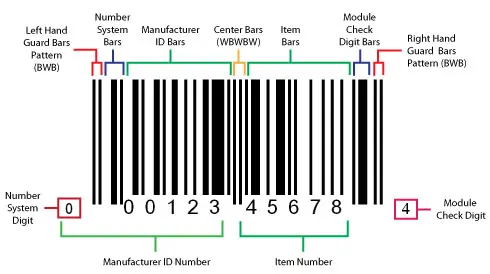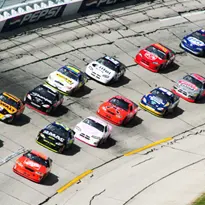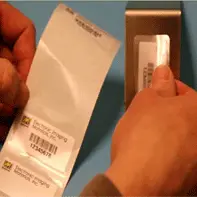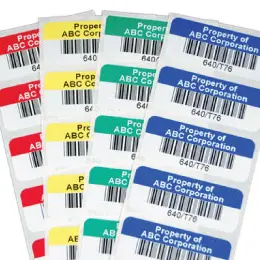The Universal Product Code (UPC) is a barcode symbology that is widely used in the United States and Canada for tracking trade items (fancy term for products) in stores. Practically every item purchased from a grocery store, department store or mass merchandiser has a UPC barcode on either a label or a tag. This helps track a large number of items in a store and functions as a theft deterrent.
For some background…In 1973, the UPC barcode developed by IBM was selected by the National Association of Food Chains (NAFC) as their standard. Marsh Supermarket was selected as the testing site for the system. On June 26, 1974—it was a momentous occasion—a customer named Clyde Dawson pulled a 10-stick pack of Wrigley’s Juicy Fruit gum out of his shopping basket and Sharon Buchanan successfully scanned the barcode at exactly 8:01 AM. The very pack of gum and the receipt are now on display in the Smithsonian Institution. Let’s all go take a field trip!
What Makes Up a UPC Barcode  UPC barcodes follow the global standards established and maintained by GS1. The UPC consists of only numbers, with no letters or other characters. When a manufacturer applies to GS1, they will pay a yearly fee and be issued a six-digit manufacturer’s identification number that will appear at the beginning of every one of their UPC barcodes. That six-digit number will have a single-digit prefix designated as an industry classification.
UPC barcodes follow the global standards established and maintained by GS1. The UPC consists of only numbers, with no letters or other characters. When a manufacturer applies to GS1, they will pay a yearly fee and be issued a six-digit manufacturer’s identification number that will appear at the beginning of every one of their UPC barcodes. That six-digit number will have a single-digit prefix designated as an industry classification.
Fast Facts About UPC Prefixes?
- 0, 1, 6, 7, 8, or 9 are leading characters or digits used for most products. By prefixing a UPC-A barcode with a 0, it becomes an EAN-13 barcode.
- 2 is reserved for items sold with variable weight, such as meats, fresh fruits and vegetables. Typically the barcode will contain the item number and either the weight or the price.
- 3 is kept for Drugs by National Drug Code number. Pharmaceuticals in the U.S. have the remainder of the UPC as their National Drug Code (NDC) number.
- 4 is set aside for local use by a store, often for loyalty cards or store coupons.
- 5 is reserved for store coupons. The entire UPC contains the leading 5, a manufacturer code, a 3-digit product family code and a 2-digit coupon code that determines the amount of the discount, according to a table set by the GS1. (Example: a range of breakfast cereals)
The next five digits of the UPC are for the manufacturer’s item number. For every item sold, there needs to be a unique identifier so typically you will find a company has UPC coordinator in charge to make sure a code is not used more than once.
The last digit is called a check digit that detects errors in scanning and data entry.
The most common UPC is known as the UPC-A Barcode. It encodes 12 decimal digits and consists of exactly 30 bars. Each digit or number is represented by a six-bit sequence, encoded by a series of alternating bars and spaces. Guard bars (made up of a start digit, an end digit and a middle digit) separate the two groups of six digits. The bit pattern for each numeral is designed to be as little like the others as possible and to have no more than four consecutive 1s or 0s in order. This design achieves more reliable scanning. Did we say something simple? We know that it’s . . . ahem . . . a bit confusing.
Reach out to The Label Experts for help with all things UPC barcode labels.





